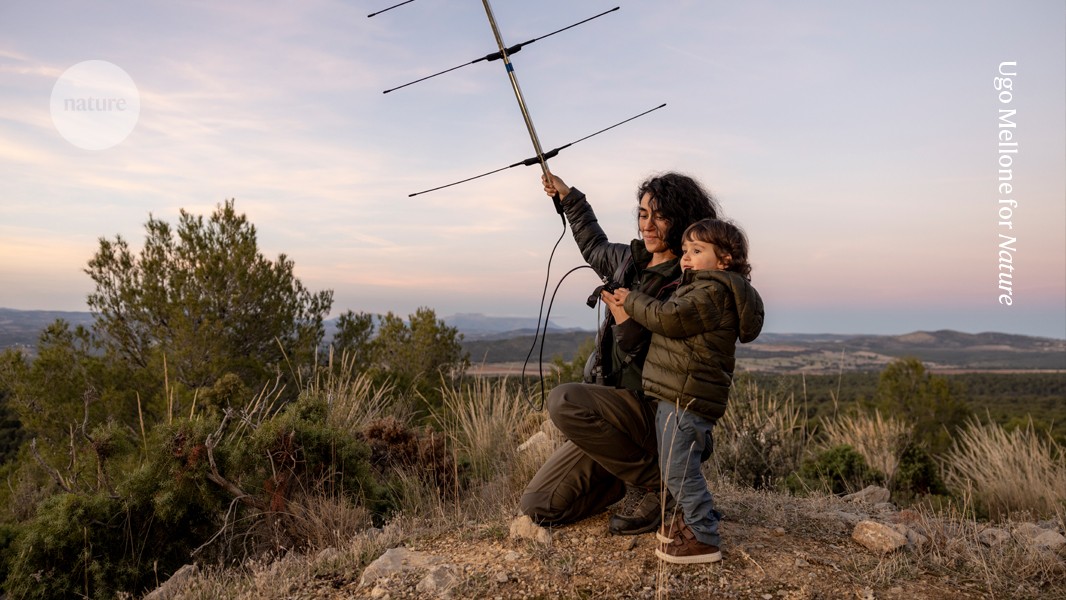Chasing wildcats with my daughter

Mariola Sánchez-Cerdá works to track the elusive European wildcat’s movements and habits
“In this photograph, I am using radio tracking to monitor European wildcats (Felis silvestris) with my daughter, Sabana. I love this image, because it brings together my two worlds: science and motherhood. It is important to me to inspire her love for nature, and my life as a field biologist allows me to do this almost every day. We are in the Sierra Harana, southern Spain, where wildcats have been monitored with radio tracking and camera traps for the past eight years. So far, we have fitted radio collars on 18 individuals and are now tracking 4 females and 3 males.
These cats are elusive and understudied, especially in the Mediterranean region. There’s more research on the reproductive ecology of cheetahs, say, in remote areas, than on wildcats in Europe.
Wildcat populations are in sharp decline and the animals are now absent from much of their former range in the Iberian Peninsula, owing to legal predator control and illegal killings, as well as road accidents, habitat fragmentation and hybridization with domestic cats. In Mediterranean areas, a decline in their main prey — rabbits — due to viral diseases seems to be the key factor. Understanding the balance of all of these factors is crucial to identify potential threats, reassess the need for greater protection and urge governments to take conservation action.
Enjoying our latest content?
Login or create an account to continue
- Access the most recent journalism from Nature's award-winning team
- Explore the latest features & opinion covering groundbreaking research
or
Sign in or create an account Continue with Google
Continue with Google
Nature 638, 1144 (2025)
doi: https://doi.org/10.1038/d41586-025-00570-w
This interview has been edited for length and clarity.
This story originally appeared on: Nature - Author:Ugo Mellone

















